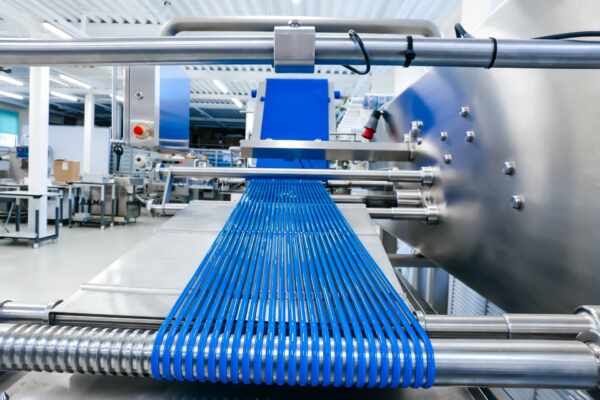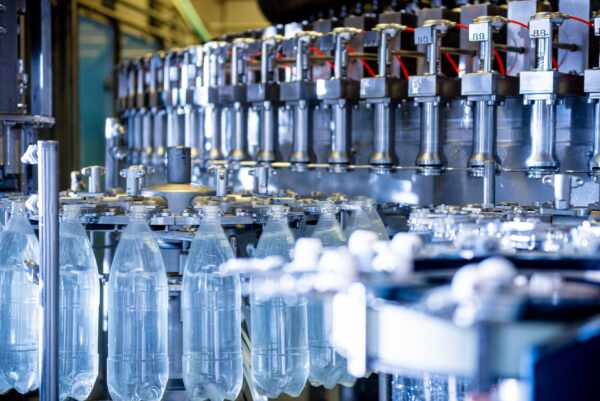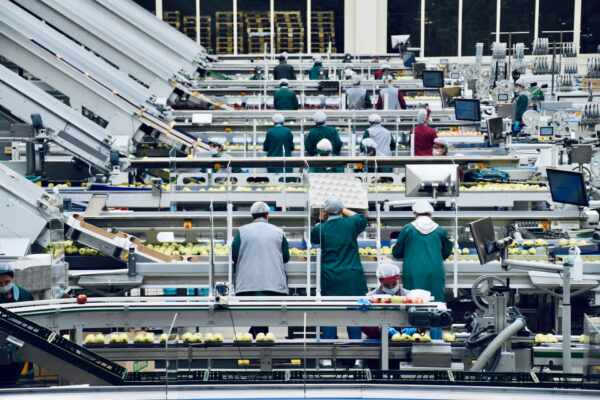In today’s competitive food manufacturing landscape, energy efficiency is becoming an increasingly critical focus for businesses seeking to reduce costs, lessen their environmental impact, and optimise operations. In food manufacturing facilities, conveyor belt systems account for a significant portion of the overall energy consumption. As a result, finding innovative ways to improve the energy efficiency of these systems is crucial for the long-term success of your business.
Conveyor belt energy efficiency is dependent upon a variety of factors, including system design, material selection, maintenance practices, and operational procedures. By carefully evaluating each of these areas and implementing strategic improvements, you can reduce energy consumption, enhance productivity, and achieve significant long-term cost savings.
In this comprehensive guide, we will delve into the key factors influencing conveyor belt energy efficiency in food manufacturing facilities, providing expert tips and strategies for optimising energy usage without compromising performance or quality. Discover how to harness the power of customisation, maintenance, and operational excellence to create a more energy-efficient, sustainable, and successful food manufacturing operation.
Optimising Conveyor Belt System Design
One of the most significant factors influencing energy efficiency in food manufacturing operations is the design of the conveyor belt system. By optimising the system design, you can achieve lower energy consumption levels and reduced operational costs. Some key design considerations to enhance energy efficiency include:
1. Minimise System Length: Design your conveyor system to be as short as possible, reducing the distance your products must travel, and decreasing the energy required for transportation.
2. Reduce Conveying Speed: Slower conveying speeds often result in reduced energy consumption. Consider adjusting the speed of your conveyor belts to balance energy savings with operational productivity.
3. Select Efficient Belt Materials: Choose belt materials that offer low rolling resistance and friction, improving energy efficiency during operation.
4. Implement Energy-Saving Technologies: Utilise energy-saving technologies, such as variable frequency drives (VFDs) or energy-efficient motors, to control conveyor system motors and optimise energy consumption.
Choosing Energy-Efficient Components and Materials
The components and materials you select for your conveyor belt systems can significantly impact energy efficiency. Consider the following factors when choosing components and materials for your food manufacturing facility:
1. Lightweight Materials: Opt for lightweight materials that require less energy to transport products. Lighter materials can also lead to reduced component wear and tear, further improving energy efficiency.
2. Low-Friction Components: Select components with low friction coefficients, such as self-lubricating bearings or idlers, which require less energy to move and maintain conveyor belt systems.
3. Durable Components: Invest in durable, wear-resistant components designed for long life, reducing the need for replacement and the associated energy consumption.
4. Energy-Efficient Drives and Motors: Choose energy-efficient drives and motors that meet or exceed relevant energy performance standards, ensuring optimal energy usage within your conveyor belt systems.
Implementing Strategic Maintenance Practices
Effective maintenance practices play a vital role in conveyor belt energy efficiency. Consider implementing the following maintenance strategies to improve energy efficiency in your food manufacturing operations:
1. Regular Inspections: Perform routine conveyor belt system inspections to identify potential issues, such as component wear or misalignment, that may increase energy consumption. Promptly address any issues detected during inspections to maintain optimal energy efficiency.
2. Maintain Proper Belt Tension: Ensure conveyor belts are appropriately tensioned to prevent slippage and energy wastage. Regularly check and adjust belt tension as necessary.
3. Lubricate Components: Adequately lubricate your conveyor system’s moving parts, reducing friction and minimising energy consumption. Be sure to follow the manufacturer’s recommended lubrication procedures and intervals.
4. Monitor Energy Efficiency Metrics: Track key energy efficiency metrics, such as energy consumption and system productivity, to identify trends and pinpoint areas for potential energy reduction.
Promoting Energy-Efficient Operational Practices
Your food manufacturing facility’s operational practices also contribute to conveyor belt energy efficiency. Implement the following practices to promote energy-efficient operations:
1. Employee Training: Equip your workforce with the knowledge and skills necessary to effectively operate and maintain conveyor belt systems in an energy-efficient manner. Provide regular training and education on energy-saving measures and practices.
2. Energy Management Program: Develop and implement an energy management program that promotes continuous improvement in energy efficiency through regular monitoring, assessment, and modification of operational processes.
3. Optimise Production Scheduling: Streamline your production scheduling to reduce idle time and minimise energy consumption associated with intermittent conveyor system operation.
4. Encourage Employee Engagement: Foster a company culture that encourages employees to take responsibility for energy efficiency, empowering them to identify and implement energy-saving opportunities in the workplace.
Conclusion
Achieving energy efficiency in your food manufacturing facility’s conveyor belt systems is essential for reducing operational expenses, minimising environmental impact, and optimising productivity. By focusing on system design, materials, maintenance practices, and operational procedures, you can create a more energy-efficient, sustainable, and profitable food manufacturing operation. Embrace the power of energy efficiency to drive long-term success in the dynamic food manufacturing industry.
Ready to energise your food manufacturing facility and unlock the benefits of improved conveyor belt energy efficiency? Contact Change Parts Pty Ltd today for expert guidance, high-quality conveyor belts, and comprehensive support, helping you achieve the energy savings, sustainability, and competitive advantage you need to excel in the food manufacturing sector.




